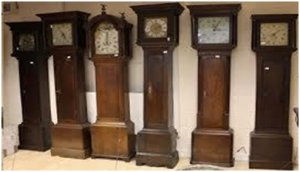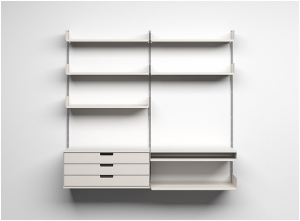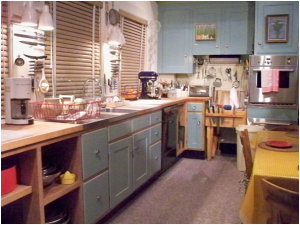Furniture dates back to prehistoric times and some of the earliest furniture ever found comes from a Stone Age village in the Orkney Islands from around 2000 BC. People lived in stone huts and make furniture from stone, such as beds and cupboards. This doesn’t sound particularly comfortable though.
Ancient Egypt was a little more glamorous with painted walls and coloured tiled floors. Furniture was made from wood with beds, chairs, tables and drawers. Poorer people lived in houses made from mud and furniture was more basic consisting of reed chests and brick benches.
Furniture in Ancient Greece was also fairly basic. The rich would have a wooden cabinet to display items on and there would have been couches to recline on but these would have been a simple affair consisting of wooden frames and webbing or mats laid on top.

Roman furniture was more advanced and in colder areas villas often boasted underfloor heating called Hypocaust. Mosaic floors were a common feature and art became apparent, with wall paintings and murals. Finely carved and upholstered furniture was owned by the wealthy but the poor still had sparse and basic furniture.
Not much is known about Saxon furniture and it is considered to have been mainly made from wood, such as benches and tables. Upper class Saxons slept on straw mattresses but the poor were on the floor. Most people lived together in one large hall, there was no glass in the windows so they hung tapestries.
Medieval furniture was still basic and even chairs were rare. The rich had tables and chests which also acted as beds and were mostly made from Oak. During the Middle Ages, furniture became a little more comfortable for the wealthy. It tended to be made from oak and was heavy and extremely large. It was to last for generations and pieces became family heirlooms. The poor still saw little improvement in their living conditions however.
During the 17th century furniture became much more finely decorated and made from walnut or mahogany. Veneering and lacquering were developed to protect wooden chairs and tables. New furniture appeared at this time, such as bookcases and Grandfather clocks. Armchairs appeared in the 1680’s.

The Victorian era lived very comfortably and this era saw the first mass produced furniture. Items became cheaper but also lessened in quality. The poor still slept on straw beds as they couldn’t afford beds. AS the century progressed lives improved but furniture was still reserved for the front room of a house, with little elsewhere.
Rising living standards during the 20th century have seen all rooms furnished, perhaps for the first time in human history and ordinary furniture has greatly improved in design and quality. Mass produced furniture is now a way of life but for those seeking an entirely personal piece, there are still bespoke furniture makers to satisfy those needs. If you do want a selection of Reception Chairs for your bespoke office then you could look at sites like Reception chairs from Best Buy Office Chairs







